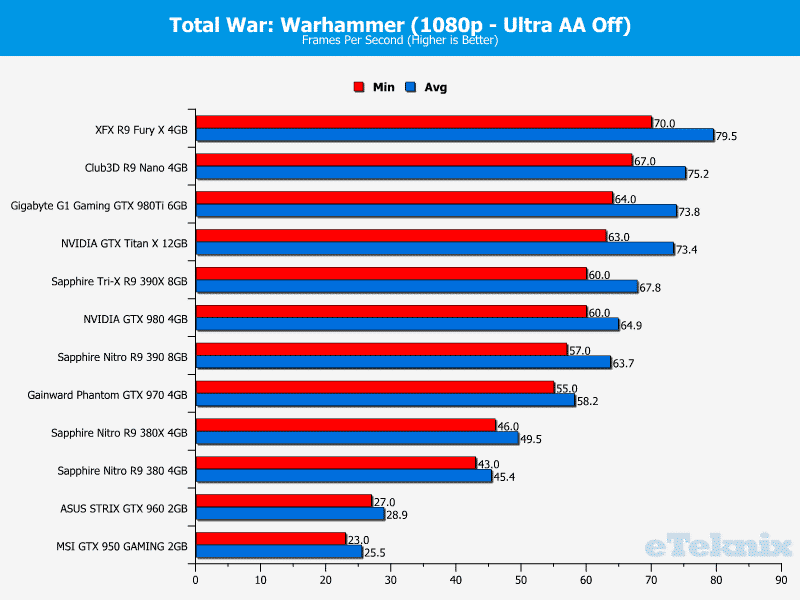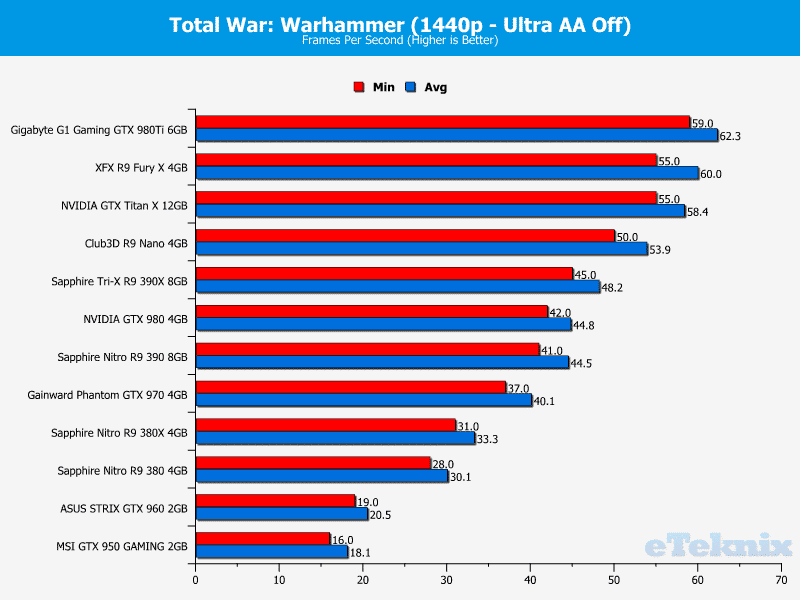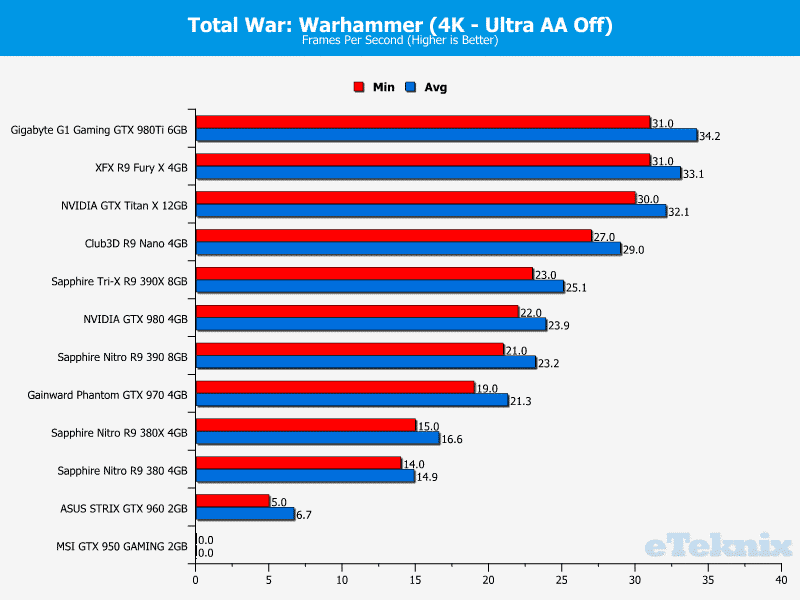Total War: Warhammer Dx12 Performance Analysis
John Williamson / 9 years ago
Total War: Warhammer – 1080p, 1440p and 4K Benchmarks
At 1920×1080, the Fury X soars ahead of the competition and upholds a really fluid frame-rate. The R9 Nano does remarkably well and achieves better numbers than one of the highest performing GTX 980Ti cards on the market. Speaking of the GTX 980Ti, this particular GPU just edges the GTX Titan X and both products maintain at least 60 frames-per-second during demanding sequences. Next up is the R9 390X which outputs stunning performance for the money and defeated the GTX 980.
A similar pattern emerges between the R9 390 and GTX 970 and it’s clear that AMD graphics cards exhibit better frame-rates in in the sub £400 price bracket. Towards the lower end, the R9 380X and R9 380 manage very respectable numbers and the low range between the minimum and average frame-rate create a less jarring experience. NVIDIA’s lower tier offerings struggle to reach 30 frames-per-second but it’s possible to obtain good results with more modest graphical settings.

Once the resolution has been increased to 1440P, the GTX 980Ti catapults into first place and records a noticeably better minimum frame-rate than the Fury X. I’m surprised to see the ranking order change so dramatically given the GTX 980Ti’s 1080P performance. On a more positive note for AMD fans, the Fury X remains ahead of the GTX Titan X which is impressive given the price difference. The R9 Nano is capable of a very fluid frame-rate and isn’t too far away from the Titan X. Therefore, it’s pushing well above its weight and offers staggering performance considering the compact form factor.
The R9 390X managed to defeat its closest rival, the GTX 980 by a decent margin. Unbelievably, the R9 390 almost managed a better average frame-rate than the GTX 980 which illustrates AMD’s dominance in most price tiers. Granted, the minimum frame-rate is lower so you’ll enjoy a more consistent frame-rate on the GTX 980. One of the best cards available today in terms of price to performance, the GTX 970 reached an average of 40 frames-per-second. While this is a pretty good result, I would like to see it slightly closer to the R9 390. Despite the extreme graphical demands, the R9 380X and R380 cope relatively well and offer a solid 30 frames-per-second experience. Unfortunately, NVIDIA’s budget products cannot provide enough horsepower to reach a similar frame-rate.

During 4K testing, the GTX 980Ti cemented its position as the fastest graphics card although there wasn’t much to choose between the top three results. As you can see, the Fury X remained very competitive and the Titan X wasn’t too far behind. The results were so close that I decided to test the best performers multiple times to try to eliminate a margin of error. This means the data should be spot on and reflective of each GPU’s capabilities. The R9 Nano was tantalizingly close to maintaining 30 frames-per-second and fell just short of matching the GTX Titan X. Nevertheless, it’s still a good result and worthy of praise.
Judging by the previous two benchmarks, there’s nothing too surprising here as the 390X once again defeats the GTX 980 while the R9 390 slots in ahead of the GTX 970. Saying that, the GTX 970’s deficit is smaller compared to other resolutions. As expected, the lower end graphics cards like the R9 380X, R9 380 and GTX 960 struggled to deal with such a demanding preset while pushing so many pixels. Additionally, the GTX 950 failed to run the benchmark on multiple attempts and didn’t seem to be able to post any results despite my best efforts.




















